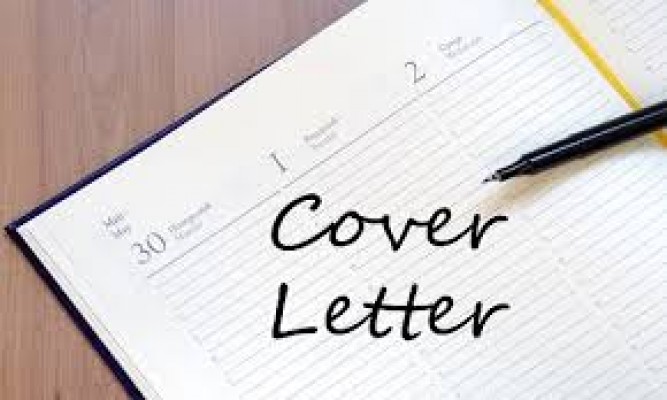Cover Letter Format & Example

posted:4 years agobyAwatef Hamdiin Cover Letters
A cover letter is not an optional element in your job application. It is a necessary complement attached to your CV or resume. Do you feel puzzled about what to write there? Have seen different cover letters writing tutorials and you are still confused about what to write there? Don’t worry, follow the guidelines of this article, as it includes exclusive, simple tips to write a professional cover letter.
What is a Cover Letter?
A cover letter provides additional information about your qualifications for the job you are applying for. It explains why you are interested in this particular job, and provides a brief summary of your skills and experience. Many applicants neglect writing a cover letter and focus on building a CV or a resume. That’s why their chances of being selected are weak, compared to an active job seeker, who wants to get noticed. Now what does this letter include?
Elements in a Cover Letter:
Whatever the field or the job you are applying for there are some essential elements that employers look for in a cover letter. A cover letter is a one-page message, you send it with your CV or resume. The same letter can be written for university admission purposes, scholarship application or self-candidacy for a committee or organizational management activity. In other words, it is for explaining why you are fit for that specific position. This letter includes:
-A self-introduction: Introduce yourself (name, your current professional situation).
-Mention the job title you want to apply for.
-Prove that you are a suitable applicant for the job or the scholarship.
-Explain some points you mentioned in your resume/ CV such as, why there was a professional gap, why you changed your career, or why you think you are eligible for the job in .
-Encourage your employer to read your CV.
Whatever the content of your cover letter, it should not exceed the size of a single page. That’s why you need to summarize your information, so that you grab your potential employer’s attention.
How to Structure a Cover Letter?
The beginning is always a hard step. The most common mistake that many applicants commit in writing cover letters is; they write a single cover letter and use it for various jobs or scholarships. In fact, each cover letter you write must be different from the rest, as there are already many cover letters types. Take a look at; Cover Letters, Types and Examples
You should choose the type that works for you, depending on the location and the field you want to apply for.
A Cover Letter Components:
1.Introductory paragraph: Letter opening
Make your cover letter clear and concise, by introducing yourself and clarifying why you are writing this letter. Example:
"My name is XYZ. I would like to apply for an Entry-level English Teacher, offered by your prestigious school (name the school). I have already completed training at ( mention your training workplace) and worked as a Substitute teacher, for (mention the period of your substitute teaching experience) at (the workplace). I am writing this letter attached to my CV, to apply for the vacant teaching position in this institution.
2. Second paragraph: Why are you suitable for this job or scholarship?
The second section of your letter must introduce the reasons why you are the most qualified person to get the job or the scholarship (if you were an international student), including a brief description of your academic qualifications and skills.
"Although this school is an international institution, which houses non English speaking students, I developed my skills to master additional languages such as, French and German. I believe that a teacher’s job is far from teaching a subject. It also includes developing the students' skills and shaping their personalities by helping them integrate in the classroom. I also have the ability to get closer to the students parents and know how to communicate with them. The importance of English to deal with different nationalities gave me an advantage to teach online and meet different students to gain a tutoring experience.
3. Third paragraph: What can you offer, what are your strengths?
In this section, you must submit your professional plans and what you can offer for the job. You can also mention past achievements in similar circumstances. Make sure you that your strengths are relevant to the job or scholarship you are seeking to apply for.
"As a potential English teacher, I always attend teaching support programs and ways to teach autistic children. I devote part of my time to learn new teaching techniques and volunteer to try them in my tutoring experience. I am also working on writing a book on effective teaching methods, as writing is my long-term hobby. Getting this job will enlarge my vision about teaching and my contribution to the field.
4. Paragraph 4: Affirm your interest in holding a job or scholarship
In this section, you should emphasize your interest in the job title. It is good to show that you want to have a meeting with your employer, as you can admire the institution's work system as a compliment away from flattery. Your reader will notice that you know details about their work, which assures them that you are interested in the job.
5. The Conclusion
The fifth paragraph is for expressing your enthusiasm for the job by inserting a note at the end of your letter, such as: I am looking forward to hearing from you. Remember to add you contact details at the final section with the best letter closure.Know all about the Opening and the Closing of a Cover Letter
After writing your letter, proofread it and edit it before submitting it. After a period of your application, try to follow up on the topic yourself.
All the best!
